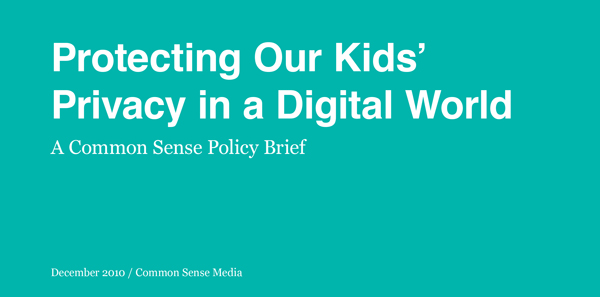Report on online privacy for Common Sense Media
/Most kids today live their lives online, immersed in a mobile and digital landscape. This brave new world has revolutionized childhood. Kids and teens now create and consume enormous amounts of online and mobile content. Their access to people and information presents both possibilities and problems. While the Internet is a platform for innovation and economic growth and brings rich resources for entertainment and learning, the very nature of digital interaction creates deep concerns about kids’ privacy.
Today, our kids are growing up in public. Whatever they text or post can be searched, copied, pasted, distributed, collected, and viewed by vast invisible audiences. Parents rightly fear that their children’s activities and personal information are being tracked and traced.
Tracking and profiling children online has quickly become a widespread practice. The Wall Street Journal recently found that 4,123 cookies and other pieces of tracking technology were installed on a test computer that was used to visit the top 50 websites for children and teens – 30% more than a Journal test of the top 50 overall sites, which are generally aimed at adults.
So what privacy protections do our children have – and what protections should they have? At the moment, there’s mainly a law written in 1998, when Google was just beginning and Facebook and Zynga didn’t exist. The Children’s Online Privacy Protection Act (COPPA) prohibits the collection of “personally identifiable” information – including name, phone number, email or street address, and Social Security number – from children ages 12 and under without parental consent. COPPA remains the cornerstone policy protecting children’s online privacy, but the technological advances that have occurred since 1998 make COPPA woefully out of date for keeping children safe from new threats to their privacy.

